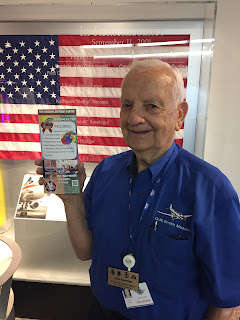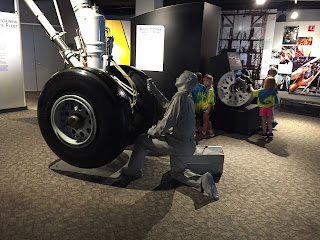RETIRING THE MD-80
Jet makes its final trip for American Airlines after 24 years in the sky
Written by:
TERRY MAXON | Staff Writer
Photography by:
MATTHEW BUSCH | Staff Photographer
Posted on: May 10, 2014
ROSWELL, N.M. — N7530, a shiny American Airlines jet, isn’t
simply nearing the Roswell International Air Center runway as it sinks
through the dry New Mexico air one recent morning. It is approaching the
end of its 24-year working life.
Once it rolls into a slot in a long line of fading AA jets, workers
here will record its serial numbers, take off its medical equipment and
other paraphernalia, drain its tanks and close it up. Unless there’s a
change of heart, a sudden surge in business, the airplane has ended its
service with American Airlines.
It’s a fate that will be shared over the next few years by the rest
of its fleet mates as American retires the remaining airplanes from what
used to be the biggest fleet in its history, the McDonnell Douglas
MD-80.
At one time, American operated more than 370 MD-80s, which it dubbed
the Super 80. Now there are fewer than 160 left, and the fleet will
shrink to under 140 by year’s end. By the end of 2018, if plans aren’t
changed, the last MD-80 will be out of American’s enormous fleet.
Almost every American pilot of the last three decades has spent time
in the MD-80 cockpit. Billy Parker, hired at American in 1989, logged
13,250 flying hours in the plane, which he described as “just a good,
reliable pair of blue jeans.”
“It’s not as sexy as the newer airplanes,” he said, “but man, it has been a workhorse.”
Mind you, there’s nothing wrong with N7530, which was delivered to
American in September 1990. Its engines are humming, its interior is
clean, its skin of polished aluminum still gleams.
Until its last day, it carried hundreds of American Airlines
passengers each day throughout the U.S. In the four days before this
final flight, it had flown out of its North Texas home to Detroit, El
Paso, Little Rock, Milwaukee, Nashville, Oklahoma City, Ontario, Calif.,
Phoenix, Pittsburgh, Tulsa and Washington, D.C.
Twenty-one flights in all, each beginning or ending at Dallas/Fort
Worth International Airport, covering nearly 15,000 miles as the crow
flies, somewhat more as air traffic controllers dictate.
The problem with N7530 is simply that it is old. Its lease has about
run out. If American were to keep it, it would need an extensive,
expensive maintenance overhaul in the near future.
And in a world of $3-a-gallon jet fuel, its newer, more efficient
companions in the American fleet have made N7530’s continued service,
and that of the other MD-80s, not a money-wise proposition.
American chief executive Doug Parker sums up the MD-80’s problems succinctly: “They’ve become obsolete, really.
“There are new aircraft coming in that are more fuel-efficient, and
the cost of fuel is so much higher than when those airplanes were
purchased,” Parker said. “The economics are much better to bring in a
new airplane because you save enough in fuel.”


















































